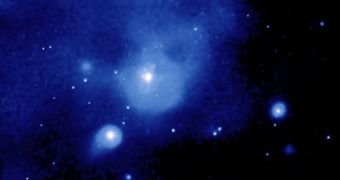For many years, astronomers have known that the universe is expanding at an ever-accelerating rate. This means that galaxies are flying away from each other, and the preferred explanation is that dark energy is driving this expansion. A new study proposes a new force instead, called antigravity.
This force could be driving this cosmic expansion, experts say, but only if the vast expanses of void spaces separating galactic clusters and superclusters from each other are filled with antimatter.
These vast areas, sometimes measuring millions of light-years from one end to another, having no discernible structures within, such as stars or at least gas clouds. They also appear to be increasing, as expansion is driving the structures at their boundaries further apart from each other.
Antigravity, as a concept, is proposed as an alternative to dark energy. Experts describe it as a kind of repulsive gravity, whose effects are apparently a little more clearly visible in the grand scheme of things than those of gravity.
Dark energy appeared because astronomers had a hard time explaining why the Universe is expanding. This is why they came up with this concept, and then started testing for its existence., Evidence to support it have been inexistent thus far.
In addition to the dark energy model, there are several other theoretical approaches seeking to explain how and why the Cosmos is expanding. One of them is based on an interpretation of the theory of general relativity which holds that matter and antimatter are mutually repulsive.
If that is the case, then antigravity could exist, and it could be the main driving force behind galactic clusters flying away from each other. In the new study, experts respond a question set decades ago – is the gravitational interaction between matter and antimatter attractive or repulsive?
According to experts at the Osservatorio Astronomico di Torino, in Pino Torinese, Italy, it would appear that both matter and antimatter are self-attractive, while each of them repeals the other. In other words, the interaction between baryonic matter and matter is repulsive.
Applied at a large scale, this may finally help explain why clumps of normal matter (clusters or superclusters) are being pushed away by cosmic voids that are filled with antimatter.
Testing to see if this theory holds true may even be a lot easier than building the complex detectors that are theoretically necessary to find dark energy, and conduct measurements on it, Daily Galaxy reports.

 14 DAY TRIAL //
14 DAY TRIAL //